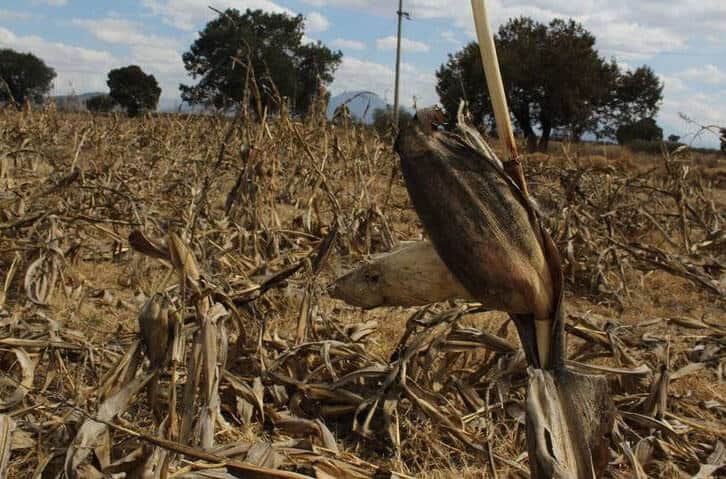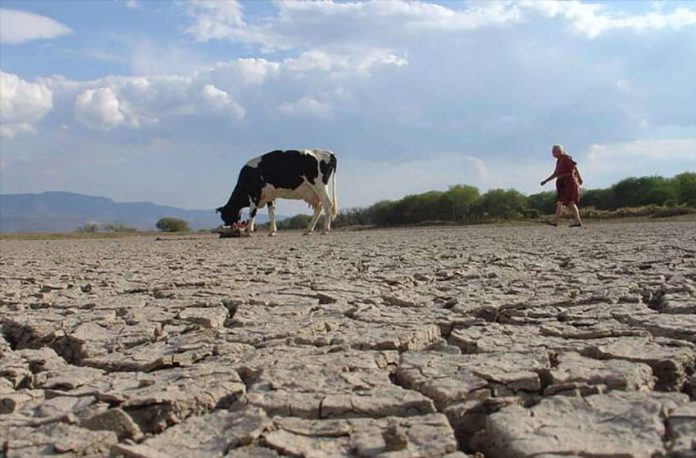The secondary effects of drought are set to spread beyond the worst affected areas, hitting grain production in the millions of tonnes, endangering livestock and limiting water supply in urban areas.
Corn production has already fallen this year. From January through July, 13.4 million tonnes of corn, wheat and sorghum grains were produced, 6.6% less than in 2019, according to the Agri-Food and Fisheries Information Service (SIAP).
This year’s drought looks set to make matters worse. The National Water Commission’s (Conagua) drought monitoring report with data to July 31 shows water levels 13.2% lower in annual terms in dams for agricultural use. Seven hundred and seventy municipalities were revealed to be experiencing exceptional drought, 8.1% higher than for the same period last year.
Jorge Luis López of the National Agricultural Council (CNA) said the lack of water could cause ever greater losses in the near future. He said northern Mexico “is the most affected in terms of availability, we lost on the order of 1 million tonnes of grain, but if it doesn’t rain throughout central north Mexico we’re talking about losing 3 to 4 million,” he said.

“There are significant risks because throughout the center and north of the country, which is the main grain zone, the Conagua drought monitor is at severe levels. We are entering the rainy season, hopefully it will rain, but today there is a significant risk of the grain production cycle being affected,” López said, adding that farmers in Tamaulipas had turned to crops that use less water like sorghum.
However, the head of the National Association of Water and Sanitation Entities (ANEAS), Hugo Rojas, said the agricultural sector uses 76.6% of water in the country, but does so inefficiently. “They would have more water than they could use if they had some saving or efficient water management systems,” he said.
Rojas added that the government was responsible for water management and that a new strategy is long overdue. “We have been commenting on the need for a change of management model for 20 years. We began to see the effects, and for a long time nothing was done, and we hope that with this crisis and especially with those that come in the short term, the necessary measures are taken,” he said.
For the time being, the water crisis is set to spread to the most populated area of the country. Thirteen municipalities in the Valley of México and 16 Mexico City boroughs will have water supplies cut by 2.4% from August 15 due to the lack of rainfall.
In northeast Mexico, cattle are also facing a bleak future. The head of a farmers committee in Reynosa, Tamaulipas, Mauro Barrera Martínez, said the situation was at a crisis point after 120 days without rain. “The crisis of water that we are experiencing in the northeast is taking on catastrophic tones … the municipality is sending water for human consumption but not for cattle. A large animal drinks 60-70 liters of water a day … we don’t have food for the cattle, we don’t have crops, we don’t have anything,” he said.
With reports from Milenio and Agencia Informativa de México
